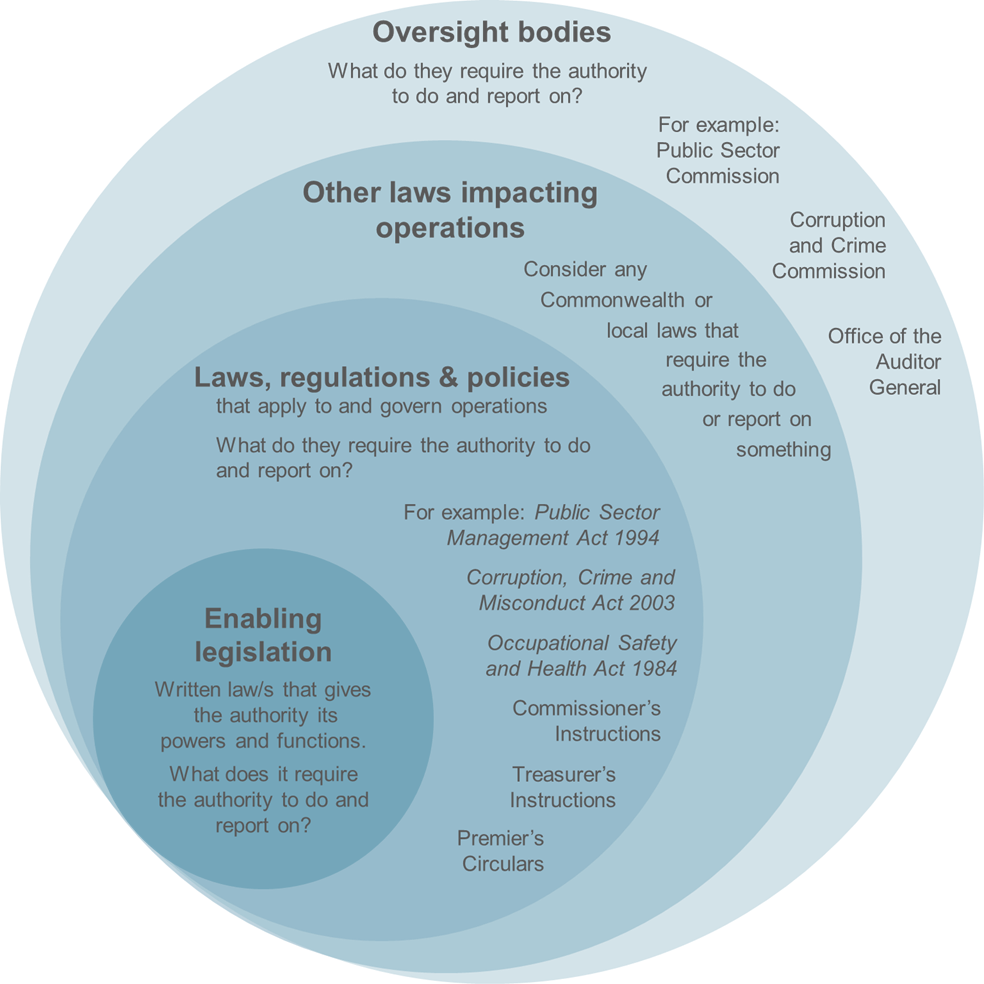Legislation is passed by Parliament and sets out broad legal and policy principles about a topic. It describes requirements and can include punishments for breaking the law.
Regulations, rules, by-laws and some codes (subsidiary legislation) define and control how an authority operates to implement the law. They have legal effect.
Some laws give an authority and its officers powers and functions (enabling legislation). Other laws set out how an authority governs its operations and how officers are to conduct themselves. Laws may also provide for an authority to take action against officers who do not comply with the expectations it sets.
Accountability mapping can help an authority reflect obligations arising from legislation and regulations in its internal controls, policies and procedures.
Why are legislation and regulations important?
Legislation and regulations set the foundation for what authorities, and those who work in them, can and cannot do. Authorities operationalise these obligations and requirements through expectations, standards (like codes of conduct), policies and procedures. Together, they create a consistent understanding of what is required and set the parameters for officers’ actions and decisions.
Ideas for good practice for legislation and regulations
Good practice
- Map accountabilities to clarify the legislative and external policy requirements that apply to the authority. Characteristics of an accountability map are shown in the diagram below. It includes documenting:
- legislation that provides the authority’s powers and functions
- legislation, regulations and external policy requirements that apply to and govern the authority’s operations
- internal (audit committee) and external (Office of the Auditor General, Public Sector Commission) stakeholders who provide oversight
- what these instruments or stakeholders require the authority to do or report on, and when.
- Consider developing a calendar with requirements of external oversight bodies.

Completing the integrity framework template
Show moreIn this section of the framework, list or group enabling legislation and other laws, regulations and external policies that apply to and govern the authority’s operations.
An example of an accountability map is provided. It helps an authority describe what legislation, regulation and external policy requires it to do and report on. It also provides commentary about how these obligations are met in practice.
How much detail to include in the accountability map is a decision for the authority.
Whatever approach is taken, the authority head should have an appropriate level of assurance that obligations are being met. For those with established approaches, many obligations may be covered by existing policies and procedures.


